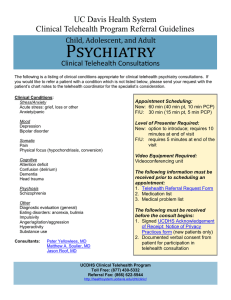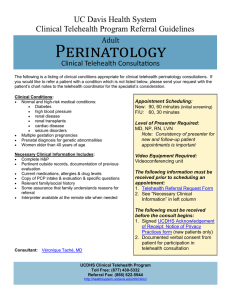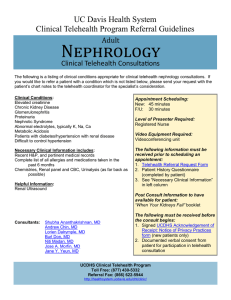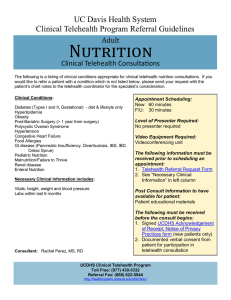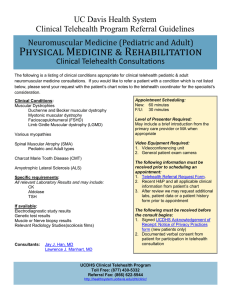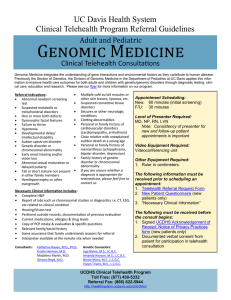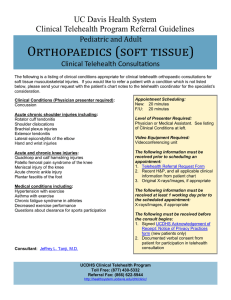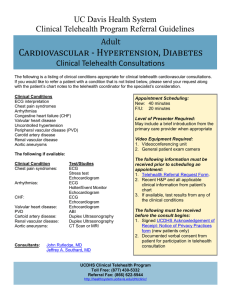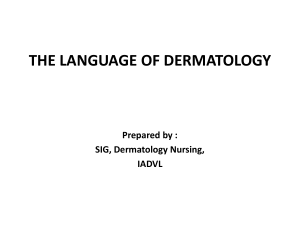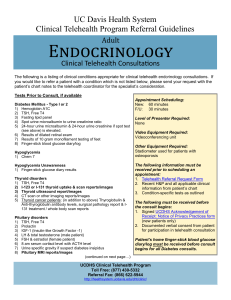Dermatology Store & Forward UC Davis Health System Pediatric and Adult
advertisement
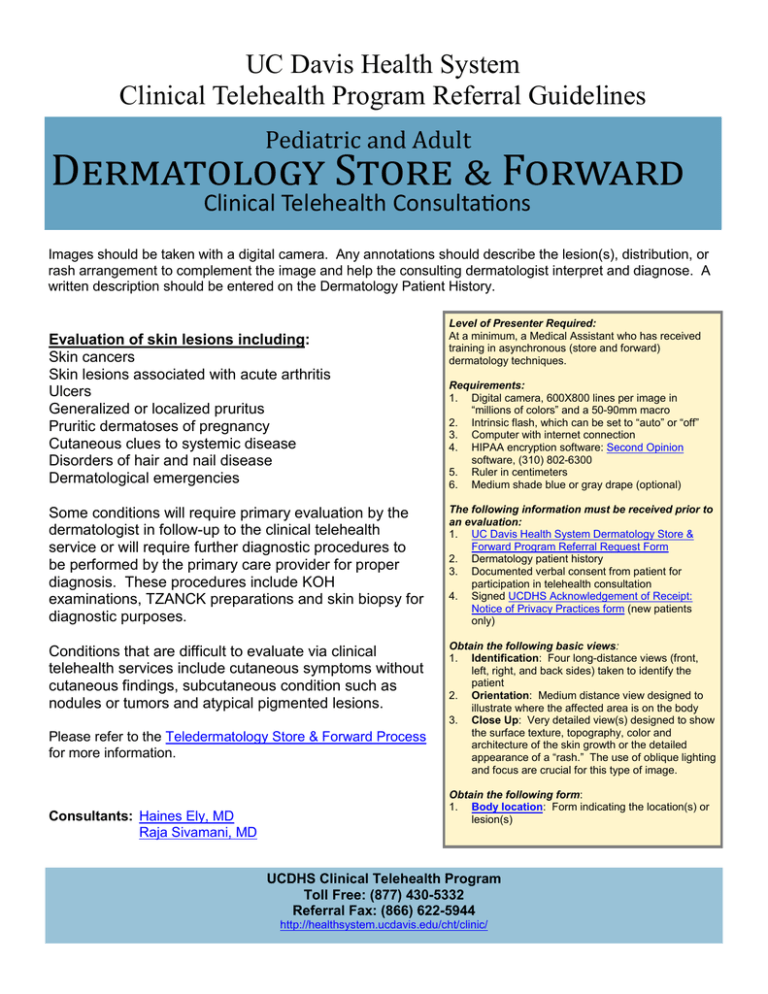
UC Davis Health System Clinical Telehealth Program Referral Guidelines Pediatric and Adult Dermatology Store & Forward Clinical Telehealth Consultations Images should be taken with a digital camera. Any annotations should describe the lesion(s), distribution, or rash arrangement to complement the image and help the consulting dermatologist interpret and diagnose. A written description should be entered on the Dermatology Patient History. Evaluation of skin lesions including: Skin cancers Skin lesions associated with acute arthritis Ulcers Generalized or localized pruritus Pruritic dermatoses of pregnancy Cutaneous clues to systemic disease Disorders of hair and nail disease Dermatological emergencies Level of Presenter Required: At a minimum, a Medical Assistant who has received training in asynchronous (store and forward) dermatology techniques. Requirements: 1. Digital camera, 600X800 lines per image in “millions of colors” and a 50-90mm macro 2. Intrinsic flash, which can be set to “auto” or “off” 3. Computer with internet connection 4. HIPAA encryption software: Second Opinion software, (310) 802-6300 5. Ruler in centimeters 6. Medium shade blue or gray drape (optional) Some conditions will require primary evaluation by the dermatologist in follow-up to the clinical telehealth service or will require further diagnostic procedures to be performed by the primary care provider for proper diagnosis. These procedures include KOH examinations, TZANCK preparations and skin biopsy for diagnostic purposes. The following information must be received prior to an evaluation: 1. UC Davis Health System Dermatology Store & Forward Program Referral Request Form 2. Dermatology patient history 3. Documented verbal consent from patient for participation in telehealth consultation 4. Signed UCDHS Acknowledgement of Receipt: Notice of Privacy Practices form (new patients only) Conditions that are difficult to evaluate via clinical telehealth services include cutaneous symptoms without cutaneous findings, subcutaneous condition such as nodules or tumors and atypical pigmented lesions. Obtain the following basic views: 1. Identification: Four long-distance views (front, left, right, and back sides) taken to identify the patient 2. Orientation: Medium distance view designed to illustrate where the affected area is on the body 3. Close Up: Very detailed view(s) designed to show the surface texture, topography, color and architecture of the skin growth or the detailed appearance of a “rash.” The use of oblique lighting and focus are crucial for this type of image. Please refer to the Teledermatology Store & Forward Process for more information. Consultants: Haines Ely, MD Raja Sivamani, MD Obtain the following form: 1. Body location: Form indicating the location(s) or lesion(s) UCDHS Clinical Telehealth Program Toll Free: (877) 430-5332 Referral Fax: (866) 622-5944 http://healthsystem.ucdavis.edu/cht/clinic/

